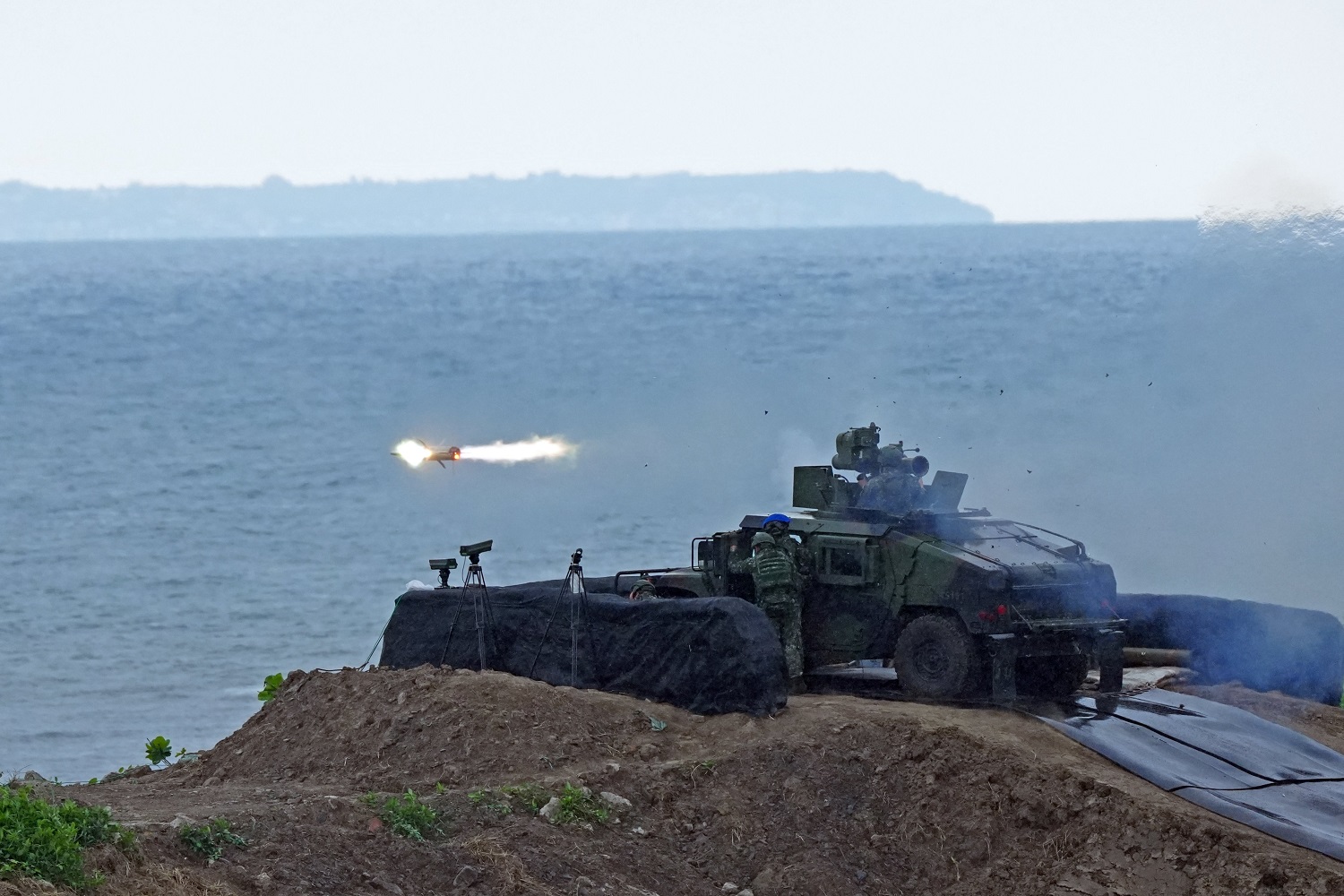Taiwan conducted drills on Monday, focusing on anti-amphibious landing missiles in a bid to bolster its defensive capabilities against an increasingly assertive China. These exercises are part of Taiwan’s broader strategy to maintain a mobile and lethal defense posture, aiming to deter any potential aggression from China, which has long claimed the democratically governed island as its territory and threatened to bring it under control by force if necessary. The drills took place over two days on a beach in Pingtung County, located at Taiwan’s southern tip. The region is strategically significant as it faces both the Taiwan Strait and the Pacific Ocean, making it a critical point in any potential conflict scenario. During the exercises, Taiwanese troops fired tube-launched, optically tracked, wire-guided (TOW) 2A missiles from M1167 Humvees at floating targets off the coast. These missiles, renowned for their effectiveness as anti-tank weapons, play a crucial role in Taiwan’s defense strategy, which prioritizes agility and precision in the face of China’s overwhelming numerical superiority in military assets.
In addition to testing the TOW 2A, Taiwan also assessed the newer TOW 2B missile system, which is part of a recent acquisition from the United States. The U.S. State Department has made a determination approving a possible Foreign Military Sale to the Taipei Economic and Cultural Representative Office in the United States in 2015. Taiwan purchased 1,700 units of the TOW 2B Aero Radio Frequency (RF) (BGM-71F-Series) missile system, with the final deliveries expected by the end of the year. The estimated cost is $268 million. The principal contractor involved in this program is Raytheon Missile Systems (RMS) of Tucson, Arizona, and McKinney, Texas. The exercises not only tested the interoperability between the TOW 2A and the more advanced TOW 2B systems but also evaluated the latter’s ability to acquire targets in nighttime conditions. The TOW 2B system, which includes 769 TOW 2B Aero Radio Frequency (RF) missiles, 14 Fly-to-Buy missiles, and 46 Improved Target Acquisition Systems (ITAS), is seen as a critical enhancement to Taiwan’s asymmetric warfare capabilities.

The BGM-71 TOW (“Tube-launched, Optically tracked, Wire-guided”) is an American anti-tank missile. It can be found in a wide variety of manually carried and vehicle-mounted forms, as well as widespread use on helicopters. Originally designed by Hughes Aircraft in the 1960s, the weapon is currently produced by RTX. The weapon is used in anti-armor, anti-bunker, anti-fortification and anti-amphibious landing roles. TOW is in service with over 45 militaries and is integrated on over 15,000 ground, vehicle and helicopter platforms worldwide. BGM-71A (TOW 1) is the original version of the TOW missile, which uses a manual command to line of sight (MCLOS) guidance system. Typically equipped with a single high-explosive anti-tank (HEAT) warhead, effective against older armor but less so against modern reactive or composite armors. BGM-71B (TOW 2) is an upgraded version that uses a semi-automatic command to line of sight (SACLOS) guidance system. Features an improved HEAT warhead designed to penetrate more advanced armor types, including those with reactive armor.
Advocates of Taiwan’s current strategy argue that these mobile missile systems are the most effective tools in an asymmetric battle against China’s vastly larger military. Given Taiwan’s geography, which features steep mountains, expansive mud flats, and densely populated urban areas, such mobile and precise systems are considered more suitable than conventional warplanes and surface ships. However, some military analysts have called for an increase in Taiwan’s air and naval capabilities to counterbalance China’s growing military presence. China has consistently increased its military pressure on Taiwan, with near-daily incursions of warplanes and warships into Taiwanese airspace and waters. These actions are part of China’s broader strategy to intimidate Taiwan’s citizens and weaken its defenses. In response, Taiwan has extended its mandatory military service to one year and is investing in building its own submarines while importing advanced military equipment from the United States.
















